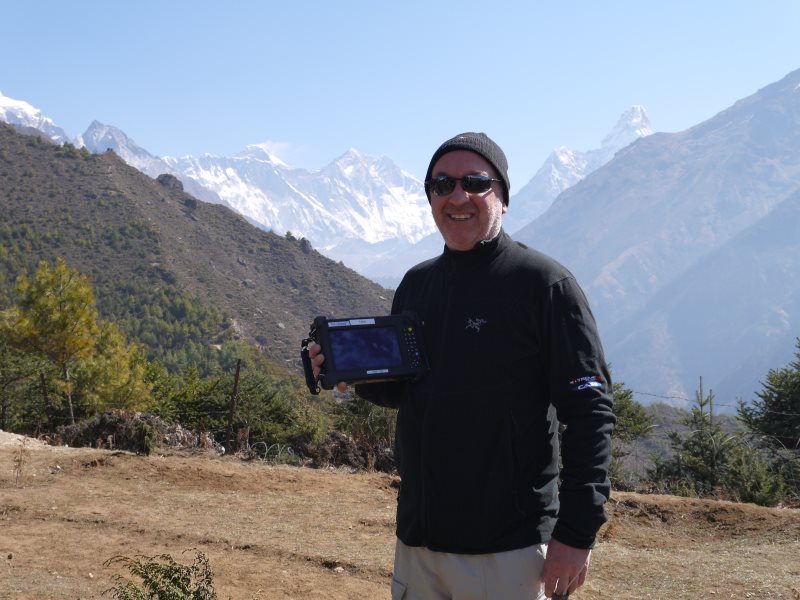
The team spent a couple of nights at the Summit Hotel in Kathmandu, where we were briefed on the journey by our trek leader. In the photo below are, from the left: Peter Moon Anna Grodecki (former Duke Fellow), Richard Moon, Petrus Fourie, Chris Young, Hementa Maharaj, Mike Teamby, Ken Stapleton, Gene Moretti, Rob Wymer (trek leader). We all volunteered to be study participants in an experiment on nitrate absorption. We survived the low nitrate diet and the 3:30 am blood draw and headed for the airport for the short flight to Lukla, said to be the most dangerous in the world. The landing on the short uphill strip, which ends in a sheer cliff, went as planned. After unloading our gear we headed for our hotel in Monjo. Chris Young’s study of continuous recording of pulse oximetry on the way to and from Everest Base Camp is a first. It was daunting to watch our oxygen saturation (which was around 85% in Lukla) decrease into the 70’s as soon as we started to walk. It didn’t take long until we adjusted our walking speed to a slower rate. It took around 6 hours to reach Monjo. The Boston Marathon’s Heartbreak Hill is nothing compared to the slope leading up toward Monjo, especially with an oxygen saturation less than 80%. After dinner, we headed to bed and the next day started a 2000 foot climb to Namche, the old Sherpa capital. Namche’s altitude is 11,500 ft, has a population of around 2000 and hosts the Xtreme Everest Lab, headed by Dr. Monty Mythen, Anaesthesia Chairman at University College London. We are now acclimatizing in Namche for two days in preparation for the next uphill step toward Base Camp.

